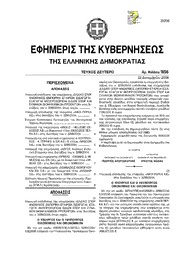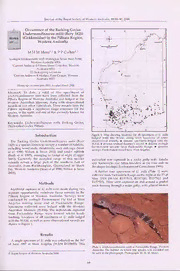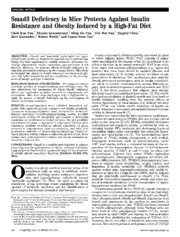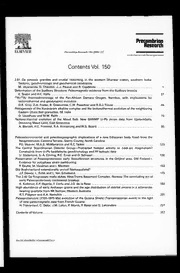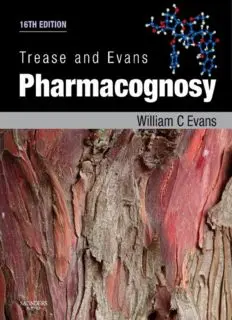
Trease and Evans Pharmacognosy, 16 th ed. PDF
Preview Trease and Evans Pharmacognosy, 16 th ed.
Trease and Evans Pharmacognosy William Charles Evans BPharm BSc PhD DSc FIBiol FLS FRPharmS Revised with the assistance of Daphne Evans ba ma SIXTEENTH EDITION Edinburgh London New York Philadelphia St Louis Sydney Toronto 2009 Contents Preface vii Part 3 Principles related to the commercial Contributors ix production, quality and standardization of natural products 81 Part 1 10. Commerce in crude drugs 83 Introduction 1 R. Baker 1. Plants in medicine: the origins of 11. Production of crude drugs 87 pharmacognosy 3 12. Plant growth regulators 93 2. The scope and practice of pharmacognosy 5 13. Plant cell and tissue culture; biochemical conversions; clonal propagation 98 3. Plant nomenclature and taxonomy 8 14. Phytochemical variation within a species 106 Part 2 The plant and animal kingdoms as 15. Deterioration of stored drugs 117 sources of drugs 13 16. Quality control 121 4. Biological and geographical sources of drugs 15 Part 4 5. A taxonomic approach to the study of Phytochemistry 133 medicinal plants and animal-derived 17. General methods associated with the drugs 18 phytochemical investigation of herbal products 135 6. Pharmacological activities of natural products 45 18. Basic metabolic pathways and the origin of secondary metabolites 148 7. Synergy and other interactions in phytomedicines 53 E. M. Williamson Part 5 Pharmacopoeial and related drugs 8. Traditional plant medicines as a source of of biological origin 169 new drugs 62 P. J. Houghton Introduction 171 9. Discovering new lead compounds in 19. Hydrocarbons and derivatives 173 pharmaceutical research and 20. Carbohydrates 194 development 75 M. J. O’Neill and J. A. Lewis 21. Phenols and phenolic glycosides 219 vi Contents 22. Volatile oils and resins 263 36. Asian medicine 498 S. E. Weston 23. Saponins, cardioactive drugs and other steroids 304 37. Chinese herbs in the West 504 S. Y. Mills 24. Miscellaneous isoprenoids 333 2 38. Plants in African traditional medicine—some 25. Cyanogenetic glycosides, glucosinolate perspectives 511 compounds, cysteine derivatives and A. Sofowora miscellaneous glycosides 347 26. Alkaloids 353 Part 7 27. The search for naturally derived Non-medicinal toxic plants and anticancer agents 416 pesticides 521 28. Antiprotozoal natural products 428 39. Hallucinogenic, allergenic, teratogenic and C. W. Wright other toxic plants 523 29. An overview of drugs with antihepatotoxic 40. Pesticides of natural origin 533 and oral hypoglycaemic activities 436 30. Antibacterial and antiviral drugs 445 Part 8 31. Vitamins and hormones 451 Morphological and microscopical examination of drugs 537 32. The plant nutraceuticals 459 G. B. Lockwood Introduction 539 33. Colouring and flavouring agents 471 41. Plant description, morphology and anatomy 541 34. Miscellaneous products 477 42. Cell differentiation and ergastic cell contents 551 Part 6 Plants in complementary and 43. Techniques in microscopy 563 traditional systems of medicine 483 Introduction 485 Index 571 35. Herbal medicine in Britain and Europe: regulation and practice 487 S. Y. Mills 1 PART 1 Introduction 1. plants In medIcIne: the orIgIns of pharmacognosy 3 2. the scope and practIce of pharmacognosy 5 3. plant nomenclature and taxonomy 8 3 The universal role of plants in the treatment of disease is exemplified by 1 their employment in all the major systems of medicine irrespective of the underlying philosophical premise. As examples, we have Western medicine with origins in Mesopotamia and Egypt, the Unani (Islamic) and Ayurvedic (Hindu) systems centred in western Asia and the Indian subcontinent and those of the Orient (China, Japan, Tibet, etc.). How and when such medicinal plants were first used is, in many cases, lost in pre-history, indeed animals, other than man, appear to have their Plants in medicine: own materia medica. Following the oral transmission of medical infor- mation came the use of writing (e.g. the Egyptian Papyrus Ebers c. 1600 bc), baked clay tablets (some 660 cuneiform tablets c. 650 bc the origins of from Ashurbanipal’s library at Nineveh, now in the British Museum, refer to drugs well-known today), parchments and manuscript herb- als, printed herbals (invention of printing 1440 ad), pharmacopoeias pharmacognosy and other works of reference (first London Pharmacopoeia, 1618; first British Pharmacopoeia, 1864), and most recently electronic storage of data. Similar records exist for Chinese medicinal plants (texts from the 4th century bc), Ayurvedic medicine (Ayurveda 2500–600 bc) and Unani medicine (Kitab-Al-Shifa, the Magnum Opus of Avicenna, 980–1037 ad). In addition to the above recorded information there is a great wealth of knowledge concerning the medicinal, narcotic and other properties of plants that is still transmitted orally from generation to generation by tribal societies, particularly those of tropical Africa, North and South America and the Pacific countries. These are areas containing the world’s greatest number of plant species, not found elsewhere, and with the westernization of so many of the peoples of these zones there is a pressing need to record local knowledge before it is lost forever. In addition, with the extermination of plant species progressing at an alarming rate in certain regions, even before plants have been botanic- ally recorded, much less studied chemically and pharmacologically, the need arises for increased efforts directed towards the conservation of gene pools. A complete understanding of medicinal plants involves a number of disciplines including commerce, botany, horticulture, chemistry, enzym- ology, genetics, quality control and pharmacology. Pharmacognosy is not any one of these per se but seeks to embrace them in a unified whole for the better understanding and utilization of medicinal plants. A perusal of the monographs on crude drugs in a modern pharmaco- poeia at once illustrates the necessity for a multidisciplinary approach. Unlike those who laid the foundations of pharmacognosy, no one person can now expect to be an expert in all areas and, as is illustrated in the next chapter, pharmacognosy can be independently approached from a number of viewpoints. The word ‘pharmacognosy’ had its debut in the early 19th century to designate the discipline related to medicinal plants; it is derived from the Greek pharmakon, ‘a drug’, and gignosco, ‘to acquire a knowledge of’ and, as recorded by Dr K. Ganzinger (Sci. Pharm., 1982, 50, 351), the terms ‘pharmacognosy’ and ‘pharmacodynamics’ were probably first coined by Johann Adam Schmidt (1759–1809) in his hand-written manuscript Lehrbuch der Materia Medica, which was posthumously published in Vienna in 1811. Schmidt was, until his death, professor at the medico-surgical Joseph Academy in Vienna; interestingly he was also Beethoven’s physician. Shortly after the above publication, ‘phar- macognosy’ appears again in 1815 in a small work by Chr. Aenotheus Seydler entitled Analecta Pharmacognostica. Pharmacognosy is closely related to botany and plant chemistry and, indeed, both originated from the earlier scientific studies on medicin al plants. As late as the beginning of the 20th century, the subject had developed mainly on the botanical side, being concerned with the description and identification of drugs, both in the whole state and 4 InTRoducTIon in powder, and with their history, commerce, collection, preparation artificial propagation by cell culture, etc., of such species. In order to and storage. In his series A History of British Pharmacognosy (1842– avert the type of supply crisis that arose at the clinical trial stage with 1980), E. J. Shellard (Pharm. J., 1980, 225, 680) wrote: the anticancer drug taxol, isolated from T. brevifolia, the US National Cancer Institute initiated plans for future action should a similar It is a recognised fact that in the historical development of any subject the situation again arise (see G. M. Cragg et al., J. Nat. Prod., 1993, 56, role of certain individuals is of considerable importance. This is true in 1657). However, it was reported that as a result of the original demand pharmacognosy. The first British pharmacognosist was Jonathan Pereira for the drug galanthamine (q.v.) for the treatment of Alzheimer’s (1804–1853), who as the first teacher of the subject gave it its pharmaceu- 1 tical basis. He may be considered as the founder of British pharmacognosy. disease, the native source of Leucojum aestivum was endangered. Daniel Hanbury (1825–1875) was the most outstanding applied pharma- The situation was partially resolved following the commercial cognosist while the contribution made by E. M. Holmes (1843–1930) synthesis of galanthamine. as an applied pharmacognosist stands out both in quality and quantity. The use of single pure compounds, including synthetic drugs, is not H. G. Greenish (1855–1933), and T. E. Wallis (1876–1973) transformed without its limitations, and in recent years there has been an immense the old academic pharmacognosy by their contribution to the elimination revival in interest in the herbal and homoeopathic systems of medicine, of adulteration from powdered drugs. Their exploitation of the microscope both of which rely heavily on plant sources. At the 9th Congress of the in pharmacognosy ensures their position as the pillars of the halcyon days Italian Society of Pharmacognosy (1998) it was stated that the current (of pharmacognosy). return of phytotherapy was clearly reflected by the increased market Such branches of pharmacognosy are still of fundamental importance, of such products. In 1995 the latter, for Europe, reached a figure of particularly for pharmacopoeial identification and quality control $6 billion, with consumption for Germany $2.5 billion, France $1.6 purposes, but rapid developments in other areas have enormously billion and Italy 600 million. In the US, where the use of herbal prod- expanded the subject. ucts has never been as strong as in continental Europe, the increase The use of modern isolation techniques and pharmacological testing in recent years has also been unprecedented with the market for all procedures means that new plant drugs may find their way into medi- herb sales reaching a peak in 1998 approaching $700 million. Again, cine as purified substances rather than in the form of galenical prepara- illustrating the same trend, the editor of Journal of Natural Products, tions which, for various reasons, would be unsatisfactory. Preparation 1999, wrote that in response to the increasing prominence of herbal is usually confined to one or a few companies who process all the remedies, additional contributions describing scientific investigations raw material; thus, few pharmacists have occasion to handle dried of a rigorous nature would be welcomed, a suggestion that appears to Catharanthus roseus although they are familiar with formulations of have been fully endorsed! the isolated alkaloids vinblastine and vincristine. For these new drugs it Undoubtedly, the plant kingdom still holds many species of plants is important that the pharmacist is cognisant of the physical, chemical containing substances of medicinal value which have yet to be discov- and chromatographic standards applicable to the identification, purity, ered; large numbers of plants are constantly being screened for their etc. of such products. Similar remarks apply to other anticancer drugs possible pharmacological value (particularly for their anti- inflamma- derived from Taxus, Podophyllum and Ochrosia spp. tory, hypotensive, hypoglycaemic, amoebicidal, antifertility, cytotoxic, When specific plants, including those used in traditional medi- antibiotic and anti-Parkinsonism properties). Pharmacognosists with a cine, suddenly become of interest to the world at large, the local wild multidisciplinary background are able to make valuable contributions sources soon become exhausted. This necessitates, as in the case to these rapidly developing fields of study and pharmacists in general of Catharanthus roseus, Coleus forskohlii, Ginkgo biloba, Arnica need to have a knowledge of, and to give professional advice on, the montana and Taxus brevifolia, research into the cultivation or many herbal preparations available to the public. 5 Until relatively recently pharmacognosy was regarded, almost 2 exclusively, as a subject in the pharmaceutical curriculum focused on those natural products employed in the allopathic system of medicine. Coincident with the increasing attractiveness of alternative (comple- mentary) therapies and the tremendous range of herbal products now generally available to the public, regulatory requirements covering medicinal herbs have been put in place by many countries in order to control the quality of these products. Monographs are now available The scope and on a large number of such drugs giving descriptions, tests for identity and purity and assays of active constituents. These monographs are being compiled by a number of bodies (see below). In this respect rec- practice of ognition should be given to the pioneering production of the British Herbal Pharmacopoeia, first produced in 1974 with the latest vol- ume in 1996. Pharmacognosy is also important in those countries pharmacognosy having their own systems of medicine in which plants are important components. Many crude drugs once generally categorized as herbal remedies are now, in accordance with Continental European practice, described in the British Pharmacopoeia (BP). Chromatographic, chemical and physical tests, together with assay procedures, are given for many drugs for which previously there was no quantitative evaluation of the chemical constituents available. The importance of quality control is paramount, as the demand and the possibility of substitution has increased. The upsurge in the marketing of Chinese and Asian tradi- tional medicines worldwide, for which there is a need for adequate control, adds a further dimension to pharmacognosy; pharmacopoe- ial monographs now include Liquorice for use in Chinese medicine, Chinese angelica root and Astragalus root. It is understood that further monographs on Chinese and Indian drugs for use in traditional medi- cine are to be included in the BP 2009. Although pharmacognosy is principally concerned with plant materials, there are a small number of animal products which are traditionally encompassed within the subject; these include such items as beeswax, gelatin, woolfat, vitamins, etc. Other natural prod- ucts such as the antibiotics, hormones and others may or may not be involved, depending on the teaching practice of a particular institu- tion. Marine organisms, both plant and animal, with potent pharmaco- logical actions are receiving increasing attention in the search for new drugs. Materials having no pharmacological action which are of inter- est to pharmacognosists are natural fibres, flavouring and suspending agents, colourants, disintegrants, stabilizers and filtering and support media. Other areas that have natural associations with the subject are poisonous and hallucinogenic plants, allergens, herbicides, insecti- cides and molluscicides. Vegetable drugs can be arranged for study under the following headings. 1. Alphabetical. Either Latin or vernacular names may be used. This arrangement is employed for dictionaries, pharmacopoeias, etc. Although suitable for quick reference it gives no indication of inter- relationships between drugs. 2. Taxonomic. On the basis of an accepted system of botanical classification (Chapter 3), the drugs are arranged according to the plants from which they are obtained, in classes, orders, families, genera and species. It allows for a precise and ordered arrangement and accommodates any drug without ambiguity. As the basic botan- ical knowledge of pharmacy students decreases over the years this system is becoming less popular for teaching purposes. 3. Morphological. The drugs are divided into groups such as the follow- ing: leaves, flowers, fruits, seeds, herbs and entire organisms, woods, barks, rhizomes and roots (known as organized drugs), and dried lati- ces, extracts, gums, resins, oils, fats and waxes (unorganized drugs). 6 InTroducTIon These groupings have some advantages for the practical study of Pratt R, Youngken HW, Jr 1956 Pharmacognosy, 2nd edn. Lippincott, crude drugs; the identification of powdered drugs (see Chapter 43) is Philadelphia, PA, USA Ross MSF, Brain KR 1977 An introduction to phytopharmacy. Pitman often based on micro-morphological characters. Medical, Tunbridge Wells 4. Pharmacological or Therapeutic. This classification involves the grouping of drugs according to the pharmacological action of their 5. Chemical most important constituent or their therapeutic use. R. Pratt and Bruneton J 1999 Pharmacognosy, phytochemistry, medicinal plants. Intercept Scientific, Medical and Technical Publications H. W. Youngken Jr. were, in 1956, the first to use this approach for Dewick PM 2002 Medicinal natural products, a biosynthetic approach, 2nd 2 an English language textbook and now, with so many plant materi- edn. John Wiley, Chichester als being screened for specific pharmacological activity, this type Hänsel R, Sticher O, Steinegger E 1999 Pharmakognosie-Phytopharmazie, 6th of listing is found increasingly in the literature. Its use is illustrated edn. Springer, Berlin (in German) Robbers JE, Speedie MK, Tyler VE 1996 Pharmacognosy and in Chapters 27–32. However, it is important to appreciate that the pharmacobiotechnology. Williams & Wilkins, Baltimore constituents of any one drug may fall into different pharmacologi- Tschirch A Handbuch der Pharmakognosie. Tauchnitz, Leipzig (two editions cal groups. and numerous volumes up to 1933) 5. Chemical or Biogenetic. The important constituents, e.g. alkaloids, With the increase in interest in medicinal plants world-wide there are glycosides, volatile oils, etc., or their biosynthetic pathways, form now many publications covering regional areas of the globe. Treatment the basis of classification of the drugs. This is a popular approach of the plants in these works may be on any of the above lines. Some when the teaching of pharmacognosy is phytochemically biased. examples are given following the Introduction to Part VI. Ambiguities arise when particular drugs possess a number of active As mentioned previously, a number of bodies have implemented principles belonging to different phytochemical groups, as illus- research and published monographs on medicinal herbs. The aim has trated by liquorice, ginseng, valerian, etc. The scheme is employed in been to set standards for quality, efficacy and safety in order that the Chapters 19–26 for arranging the established pharmacopoeial drugs. many traditional herbs meet legal requirements. The following are of The following list of works, arranged in the above five groups, will note: serve as examples and also provide a useful list of textbooks and works of reference; those no longer in print may be found in established German Commission E monographs. These were developed for pharmaceutical libraries. the German Federal Health Authority between 1978–1994 and involve 324 herbs used in German traditional medicine. The monographs give 1. Alphabetical sources, constituents and considerable pharmacological and clinical Barnes J, Anderson LA, Phillipson JD 2007 Herbal medicines, 3rd edn. Pharmaceutical Press, London information. They have now been translated into English and pub- Bisset NG (ed), Wichtl M 1996 Herbal drugs, a handbook for practice on a lished by the American Botanical Council in 1999 as a single work scientific basis. Medpharm Scientific Publishers, Stuttgart followed by expanded monographs in 2000. Bradley PR 1992, 2006 British herbal compendium, Vols I, II. British Herbal Medicine Association, Bournemouth, UK ESCOP monographs. ESCOP (European Scientific Cooperative British Pharmacopoeia 2008 and preceding edns British Herbal Pharmacopoeia 1996. British Herbal Medicine Association, for Phytotherapy) is an affiliation of European associations which has Exeter, UK produced 60 monographs on herbal drugs, published in loose-leaf form Duke JA 2002 Handbook of medicinal herbs, 2nd edn. CRC Press, New York in six fascicules, harmonizing the standards for these drugs through- Martindale: the Complete Drug Reference, 35th edn 2007. Pharmaceutical out the European Union. Information is given on approved therapeutic Press, London United States Pharmacopoeia 29/National Formulary 24 and Supplement 2006 uses, and unlike the Commission E monographs, provides references. Williamson EM 2002 Potter’s herbal cyclopaedia. CW Daniel Co, Saffron The second edition of ESCOP Monographs was published in 2003, Walden and a third edition is in the course of preparation. The national pharmacopoeias of many countries and the European Pharmacopoeia; the relevant crude drug monographs of the latter AHP monographs. The American Herbal Pharmacopoeia (1997– are included in the British Pharmacopoeia 2005) has monographs on a selection of traditional indigenous herbs with some overlap with the European monographs. Treatment of 2. Taxonomic individual drugs can be extensive, for example, the St John’s wort Paris RR, Moyse H 1965, 1967, 1971 Matière médicale. Masson, Paris, 3 vols monograph published in HerbalGram 1997, No 4 extends to 32 Thoms H 1929 Handbuch der Pharmacie. Urban and Schwarzenberg, Berlin, pages with over 150 references, colour photographs and chemical Band V, 2 vols, Pharmacognosy Trease GE, Evans WC 1972 Pharmacognosy, 10th edn. Baillière Tindall and formulae. Cassell, London WHO monographs. The World Health Organization published 3. Morphological Volume 1 of its Monographs on Selected Medicinal Plants in 1999. It Berger F Handbuch der Drogenkunde. Maudrich, Vienna, Vol I, Barks and flowers, 1949; Vol II, Leaves, 1950; Vol III, Fruits and woods, 1952; Vol IV, contains standards for quality of drugs together with a therapeutic sec- Herbs, 1954; Vol V, Roots, 1960; Vol VI, Resins etc and seeds, 1964; Vol tion; 31 plant species, the majority of which are also included in the VII, Index, 1967 above lists, are considered. Volume 2 was published in 2002. Jackson BP, Snowdon DW 1990 Atlas of microscopy of medicinal plants, culinary herbs and spices. Belhaven Press, London USP monographs. The United States Pharmacopoeia is also pro- Wallis TE, 1967 Textbook of pharmacognosy, 5th edn. Churchill Livingstone, London ducing herbal monographs. Eleven have been published, all involving drugs treated above, and twelve more were expected during 2000. 4. Pharmacological or Therapeutic Der Marderosian A, Liberti LE 1988 Natural product medicine. GF Stickley, Current awareness. Students wishing to read original research will Philadelphia, PA, USA Heinrich M, Barnes J, Gibbons S, Williamson EM 2004 Pharmacognosy and find many references in this book and should learn how to find simi- phytotherapy. Churchill Livingstone, Edinburgh lar ones for themselves. As no one can hope to read all the scientific THE ScoPE And PrAcTIcE oF PHArMAcoGnoSY 7 literature that is published, special journals are devoted to the publica- publications appearing in bound form and devoted to reviews on tion of brief abstracts from the original papers. Such abstracts give the certain aspects of plant constituents are useful for updating; often the author’s name, the subject of the research, the reference necessary to reviews cover only the advances in a particular field since the previous locate the paper in the original journal and usually a brief outline of the volume. Examples are Natural Product Reports (six issues per year) work it contains. Most pharmacy department libraries contain Chemical and Alkaloids (Academic Press). Abstracts and Biological Abstracts, which in the appropriate sections A series of multi-author books Medicinal and Aromatic Plants – cover all areas of pharmacognosy. Even so, the systematic searching Industrial Profiles (R. Hardman, series editor, CRC Press, Boca Raton, of the abstracts to cover a broad field of interests can itself be most FL) provides an in-depth coverage of major medicinal and aromatic 2 time-consuming, and publications such as Chemical Titles and Current plants for specific genera; to date (2007) forty-five volumes have been Contents can be used to give a more rapid indication of recent publica- published. Individual books for appropriate drugs are cited in Part 5 tions. Phytotherapy Research regularly includes a selected bibliography under ‘Further reading’. Books that are not part of a series but, like relating to plant drugs. Information storage and retrieval is now itself a the above, multi-author and dealing with certain specialized areas (e.g. science, and a glance at the shelf-space occupied by succeeding years alkaloids, flavonoids, isoprenoids), continually appear and generally of Chemical Abstracts is sufficient to indicate that before long, if not give up-to-date information (in so far as any book can). Symposia already, manual searches of the literature will become impossibly long which cover various aspects of pharmacognosy are frequently held in procedures. In many libraries, hard copies of these publications and of various parts of the world and scientists can easily become acquainted the journals mentioned below are no longer available, but they can be with others having like interests. Often the informal discussions which accessed on-line. Inevitably it will be necessary to rely on databases invariably arise at such meetings can be an extremely useful means for literature scanning. Pharmacognosy Titles is a computer abstract of disseminating information. In addition, the lectures presented at coverage of phytochemical research publications up to 1974 (10 vols) such meetings are often subsequently published in book form. Modern produced under the direction of Professor N. Farnsworth, University of communication systems make world-wide contact between research- Illinois. Subsequently, Farnsworth introduced NAPRALERT, a Natural ers much simpler. Product Database which is mainly, but not entirely, post-1975 and is Now available to Western scientists interested in oriental medicine viewed by many as a logical and indispensable collection of pharma- is the quarterly journal Abstracts of Chinese Medicine, published by cognostic information. The NAPRALERT database is available on a the Chinese University of Hong Kong. This gives abstracts in English scheduled-fee basis to scientists, industrial firms, government agencies of significant Chinese research papers from more than one hundred and academic institutions. Among other useful databases having a rel- scientific journals not readily available outside China. evance to pharmacognosy and published on the Web are MEDLINE, Useful dictionaries to be found in most University libraries include compiled by the US National Library of Medicine and EMBASE, pro- Dictionary of Organic Compounds consisting of 7 volumes and 10 duced by Excerpta Medica. supplements (to 1992), Dictionary of Alkaloids (2 volumes) (1989), Some journals—for example, Planta Medica, Journal of Ethno Dictionary of Terpenoids (1991) and Dictionary of Natural Products pharmacology, Phytochemistry and Journal of Natural Products— (1994) all published by Chapman and Hall and also Phytochemical periodically contain reviews on some aspect of medicinal plants. Other Dictionary: A Handbook of Bioactive Compounds from Plants (1993), journals containing research papers of pharmacognostical interest are published by Taylor and Francis. Some of these more expensive Natural Product Research and Natural Product Sciences. Periodical volumes are available on CD-ROM.
The list of books you might like

Shatter Me Complete Collection (Shatter Me; Destroy Me; Unravel Me; Fracture Me; Ignite Me)

$100m Offers

Do Epic Shit

The Silent Patient
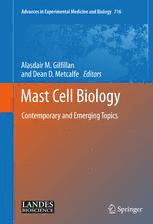
Mast Cell Biology: Contemporary and Emerging Topics

FHSU Block & Bridle Club Scrapbook: 2005-2006
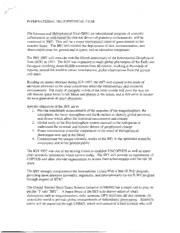
NASA Technical Reports Server (NTRS) 20050241962: International Heliophysical Year
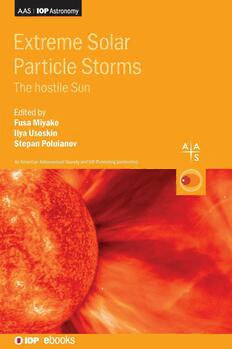
Extreme Solar Particle Storms: The Hostile Sun

Archer C7
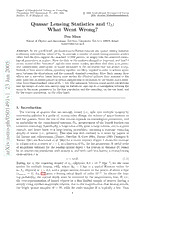
Quasar Lensing Statistics and Omega_Lambda: What Went Wrong?

Bedienungshandbuch

Poetry and Painting in Song China: The Subtle Art of Dissent
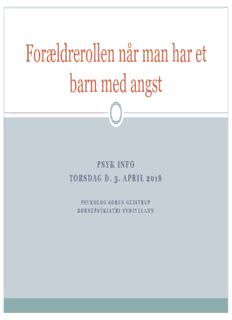
Børn og angst
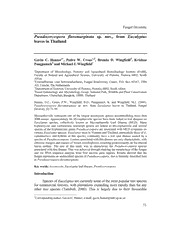
Pseudocercospora flavomarginata sp. nov. from Eucalyptus leaves in Thailand
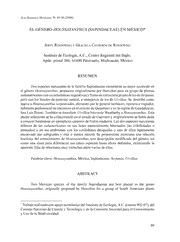
El género Houssayanthus (Sapindaceae) en México
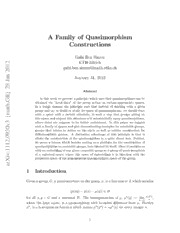
A Family of Quasimorphism Constructions
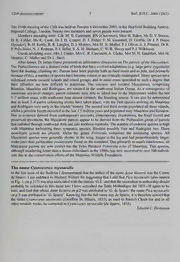
The name Cyanocorax mystacalis

Development of prey-specific predatory behavior in a jumping spider (Araneae: Salticidae)

The Guardian - Oct 9 2020
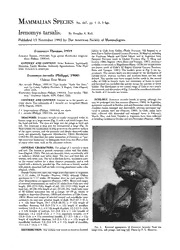
Irenomys tarsalis
